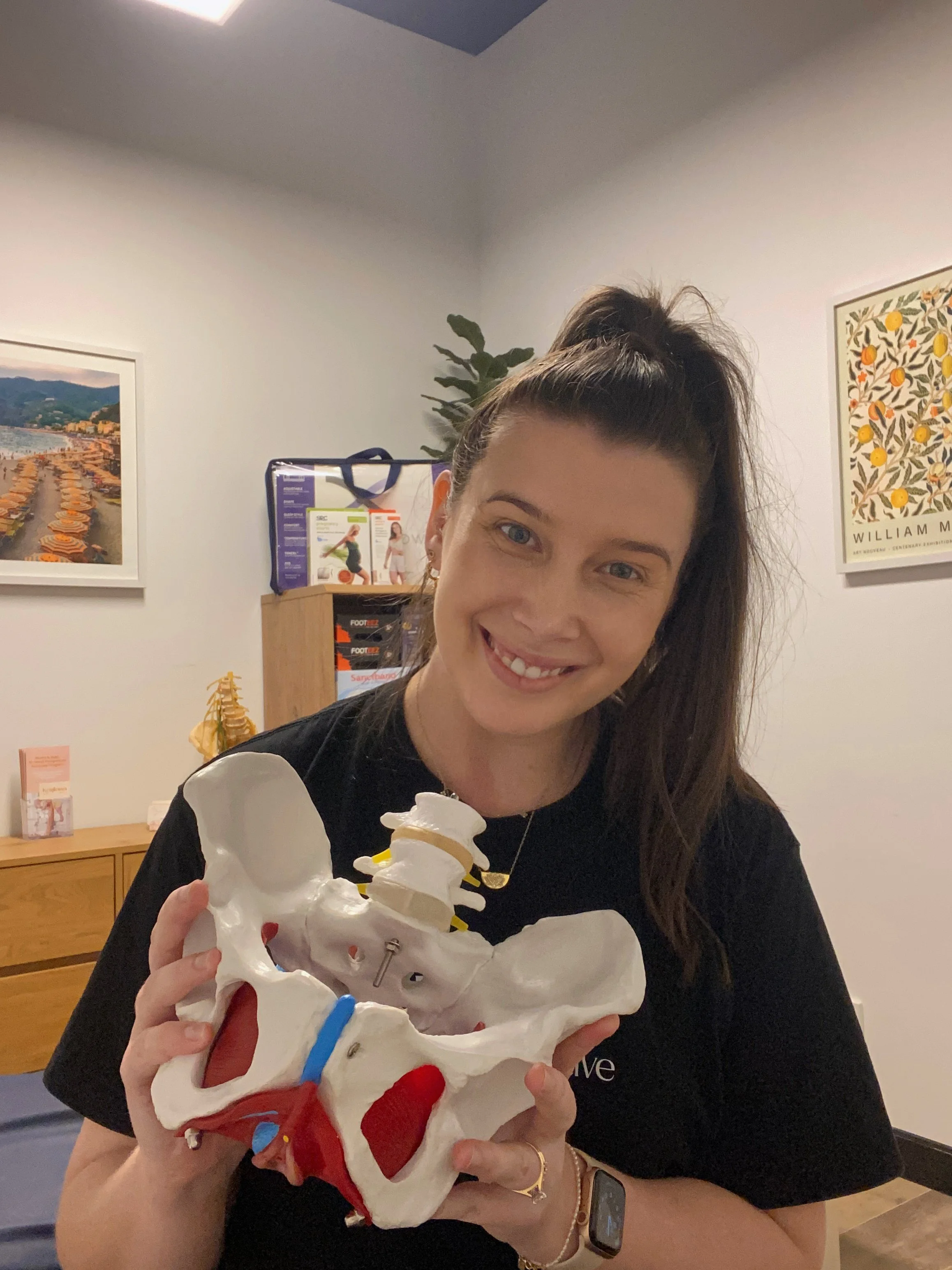Beyond Kegels: The Truth About Pelvic Floor Health and Core Strength for Women
When you hear “pelvic floor,” most people immediately think of Kegels — those classic squeeze-and-hold exercises. But here’s the truth: pelvic floor health is about much more than that.
Whether you’re pregnant, postpartum, or navigating menopause, your pelvic floor is part of a larger system that includes your breath, rib cage and deep core.
At Kaylana Wellness Collective, we take a whole-body approach. We focus on movement retraining, Pilates-informed exercise, and functional strength, while working closely with trusted women’s health physiotherapists for internal pelvic-floor assessments when needed.
Let’s debunk a few common myths and explore how to better support your pelvic floor and core connection.
Our goal?
To help you move with confidence, strength, and freedom — without fear or restriction.
Myth #1: “Kegels are the ONLY answer for pelvic floor health”
Reality:
Kegels — or pelvic floor muscle training (PFMT) — can be very beneficial, but they’re just one piece of the puzzle.
According to the National Institute for Health and Care Excellence (NICE, UK), PFMT can help manage urinary incontinence and prevent dysfunction, but individual outcomes vary depending on your age, activity level, and symptoms.
Research also shows that long-term results depend on proper technique and integration with breathing and movement — not just isolated squeezes.
What this means for you:
If you’ve been doing “lots of Kegels” but still notice symptoms such as leaking, heaviness, or pelvic discomfort, it may be time to take a broader approach.
At Kaylana Wellness Collective, we focus on:
Breath awareness and diaphragm control
Optimal pelvic floor and core engagement
Pelvic floor relaxation techniques
Postural alignment and movement coordination
Functional exercise to support your day to day activities and movement goals
Myth #2: “Only new mums need to worry about their pelvic floor”
Reality:
Pelvic floor health matters at every stage of a women’s life — not just during pregnancy or childbirth.
Factors such as peri-menopause and menopause, high-impact exercise, chronic coughing, constipation, heavy lifting, and natural aging can all influence how the pelvic floor functions and everyone’s body is unique.
Your pelvic floor is deeply connected with your core stability and breathing patterns.
That’s why at our studio, we integrate Pilates-based movement, controlled breathing, and mindful strength training to help women of all ages build resilience and body awareness.
Myth #3: “If I’m not leaking, my pelvic floor is fine”
Reality:
Not leaking doesn’t always mean your pelvic floor is functioning well. You can have pelvic pain, heaviness, prolapse symptoms, or coordination issues without any signs of incontinence.
A women’s health physiotherapist can assess the pelvic floor internally to identify if the muscles are overactive, underactive, or lacking coordination. We’ll refer you to one of our trusted women’s health physios for specialised pelvic-floor assessment as needed, ensuring you receive the most comprehensive care possible
From here, our focus is on exercise rehabilitation and functional retraining to improve your symptoms. We help you reconnect with your core and pelvic floor through breath-led movement and gradual load progression.
Myth #4: “I should avoid exercise if I have pelvic floor issues”
Reality:
It’s understandable to be cautious — but rest assured, the right type of movement can support your recovery.
Research shows that well-guided strength training and clinical Pilates can improve pelvic-floor function, provided exercises are tailored and performed with proper technique.
Our individualised exercise programs focus on:
Rebuilding core strength safely
Re-educating breath and body mechanics
Modifying load and movement to prevent strain
Gradual progression from supported to higher-intensity exercises
You don’t need to stop moving — you just need the right guidance to move well!
How Pilates and Exercise Rehabilitation Support Pelvic Floor Function
Pilates and physiotherapy-based exercise rehabilitation is the core of what we do here at Kaylana Wellness Collective. We help you to restore the body’s natural coordination between the core, diaphragm, and pelvic floor.
Benefits can include:
Improved pelvic-floor awareness and control
Enhanced core strength and stability
Improved posture and load transfer through the spine and hips
Reduced pelvic floor tension and pain
Improved confidence in everyday movement
Key Takeaway
Your pelvic floor isn’t just about “squeezing and holds.” It’s part of a connected system that supports how you breathe, move, and live.
At Kaylana Wellness Collective, we focus on exercise rehabilitation, core engagement, and whole-body movement retraining.
For internal pelvic floor assessments or specialised pelvic-floor care, we collaborate closely with trusted women’s health physiotherapists to ensure you receive comprehensive and personalised support.
Together, we help you move with confidence — at every stage of life.
References
National Institute for Health and Care Excellence (NICE). Pelvic floor dysfunction: prevention and non-surgical management. NICE Guideline NG210 (2021).
Harvey M-A, et al. (2023). “Pelvic floor muscle training for prevention and treatment of urinary and fecal incontinence in women: a systematic review.” Journal of Women’s Health, 32(4), 372–382.
Ferla L, et al. (2021). “Exercise-based management of pelvic floor dysfunction: evidence and standardisation needs.” Healthcare, 9(5), 507. https://doi.org/10.3390/healthcare9050507
Bø K, et al. (2020). “Physical activity and exercise for pelvic floor dysfunction in women: an overview of systematic reviews.” British Journal of Sports Medicine, 54(13), 810–815.
National Health Service (NHS). Pelvic floor exercises overview. NHS UK (2023).
Disclaimer
This blog is for general informational purposes only and does not replace individual assessment by a physiotherapist or healthcare provider. If you have pelvic-floor symptoms such as leakage, heaviness, or pelvic pain, please seek professional assessment before starting your exercise program.

